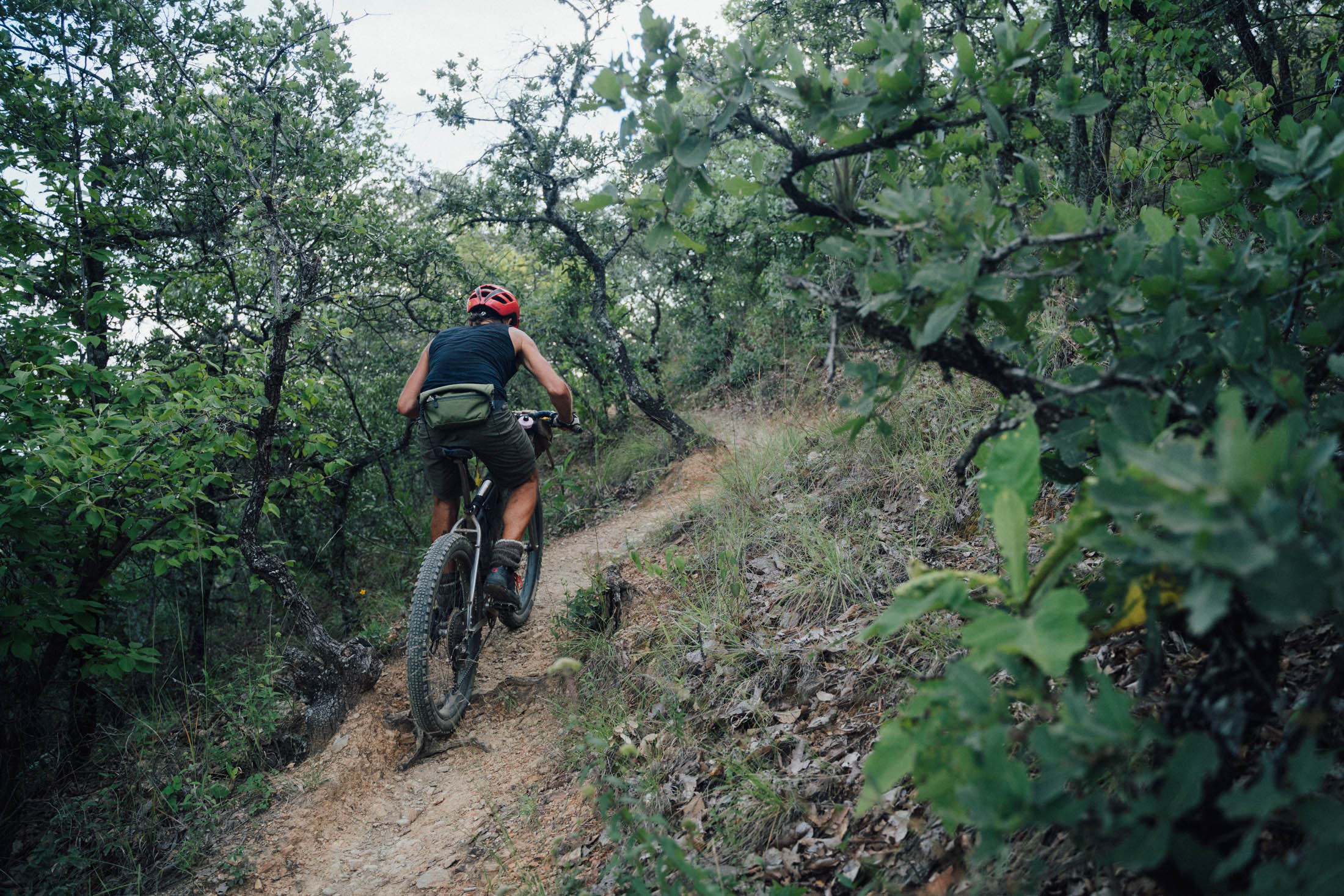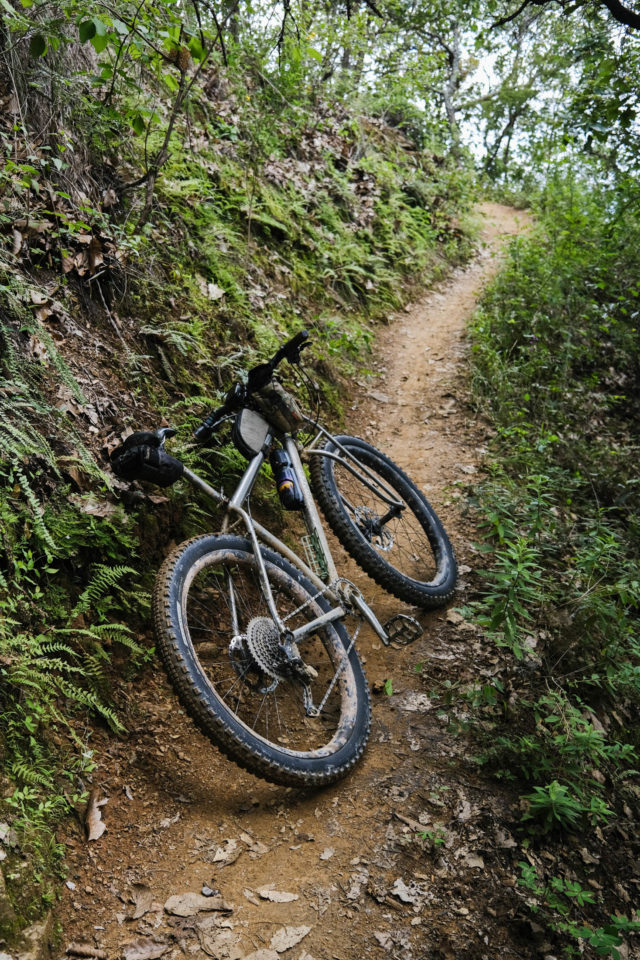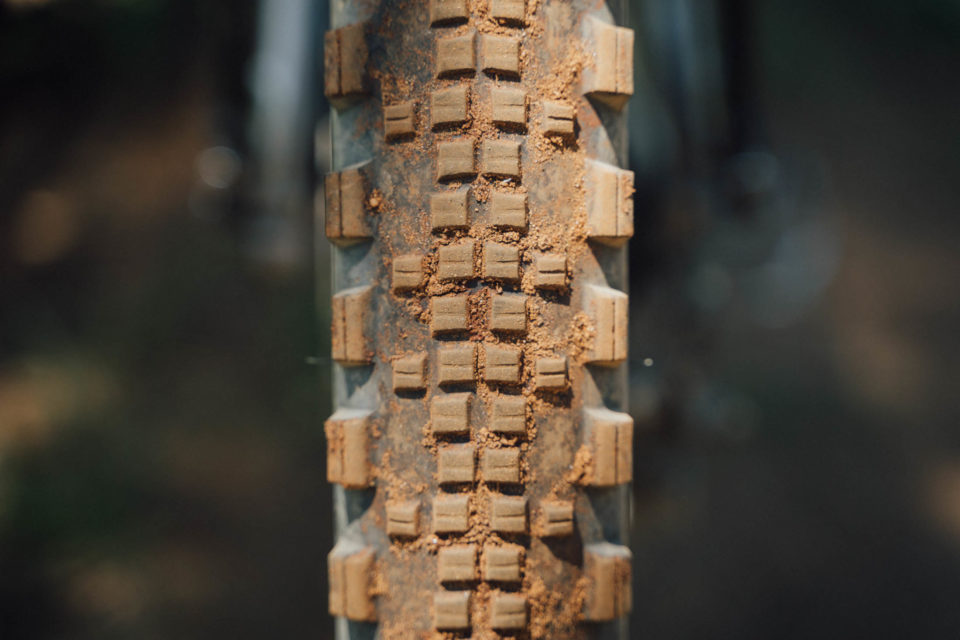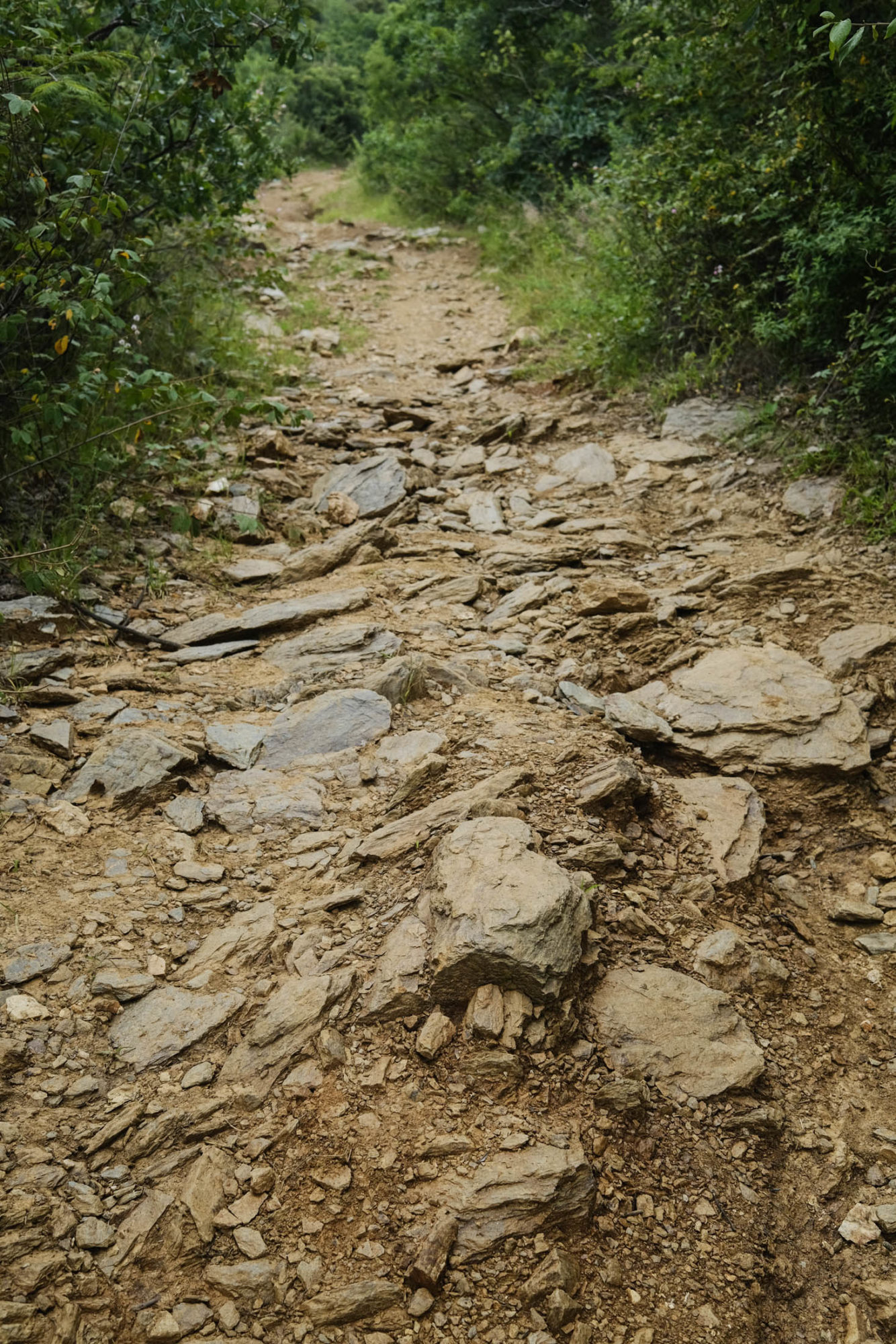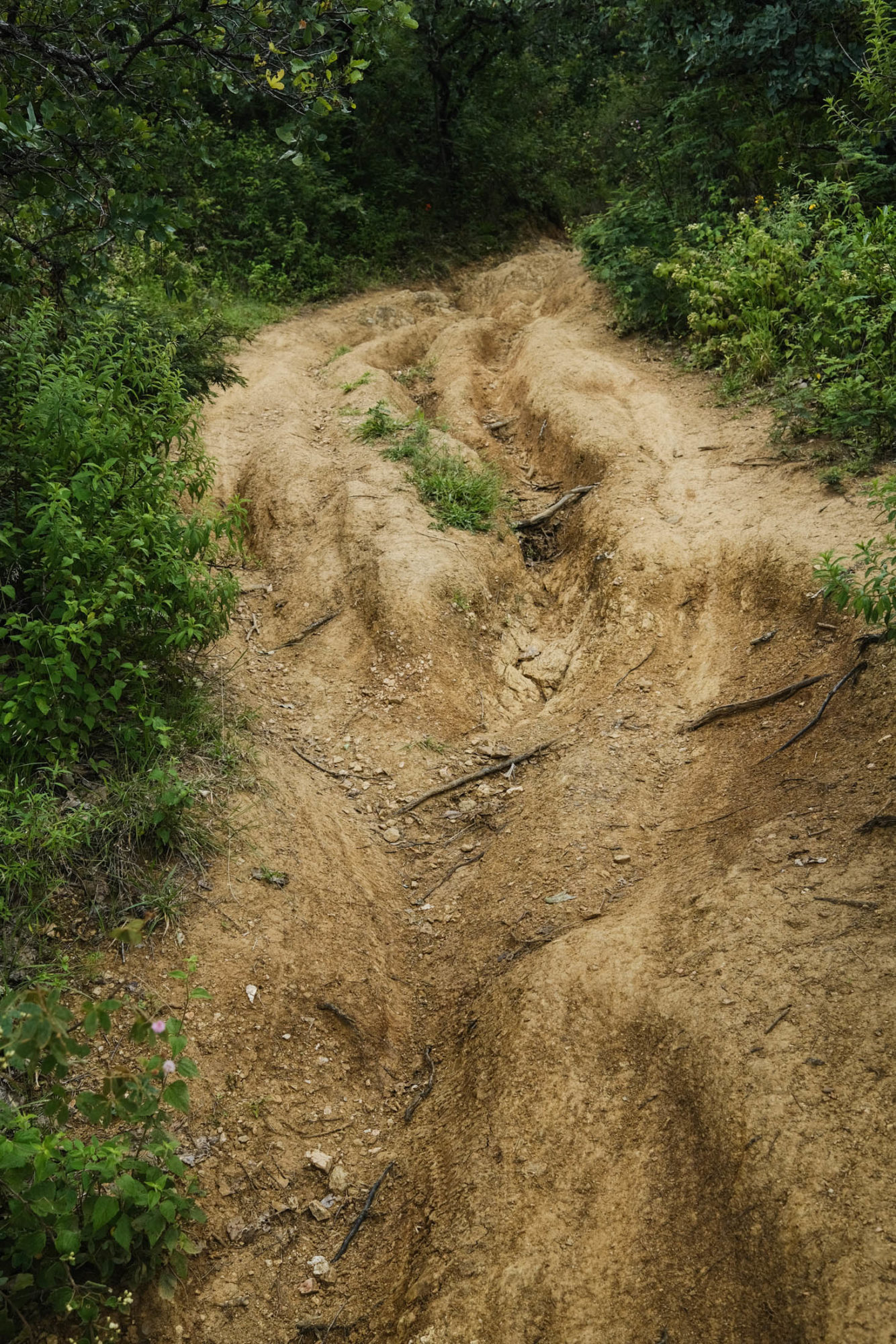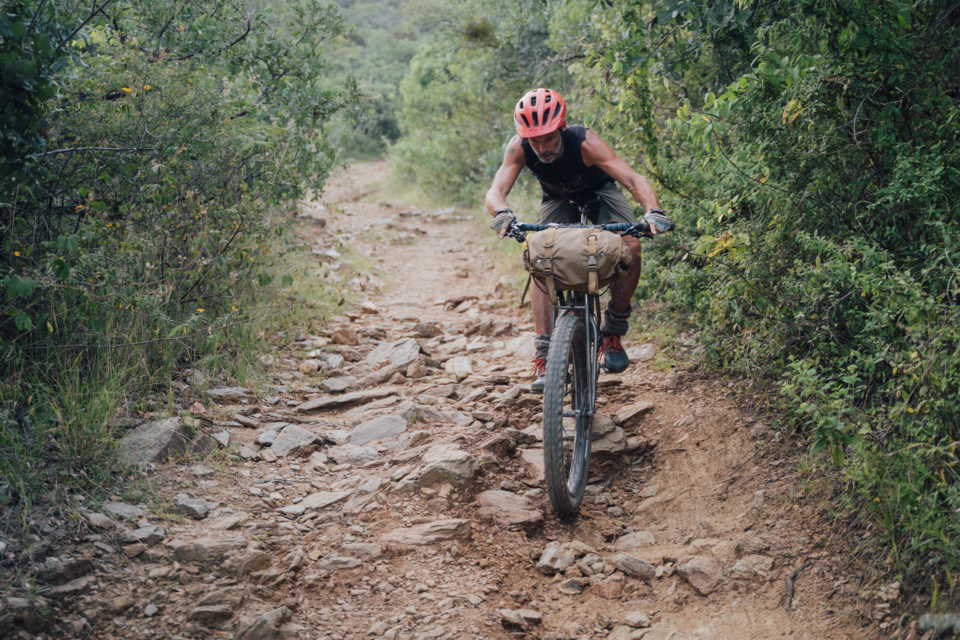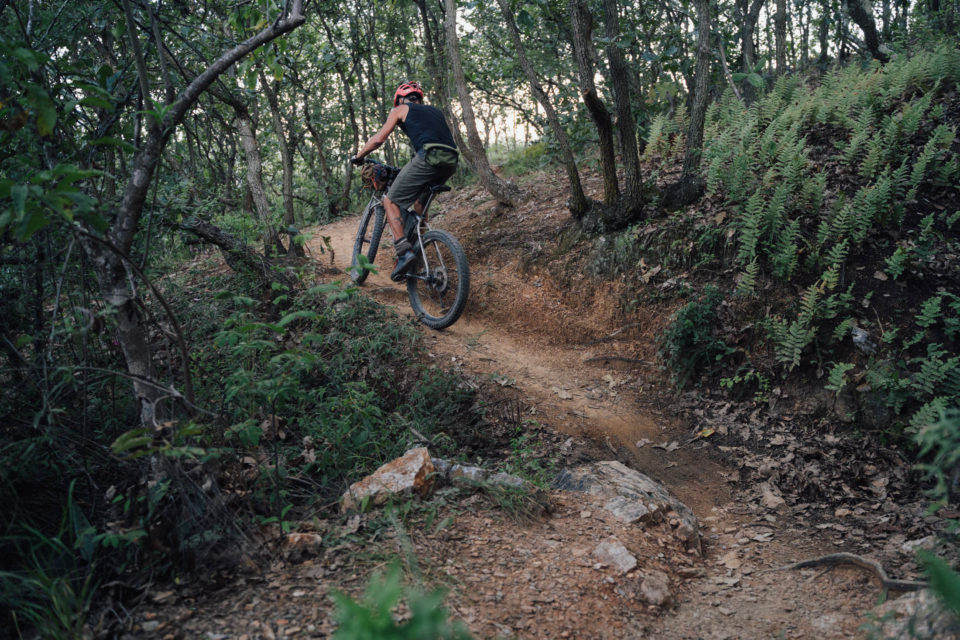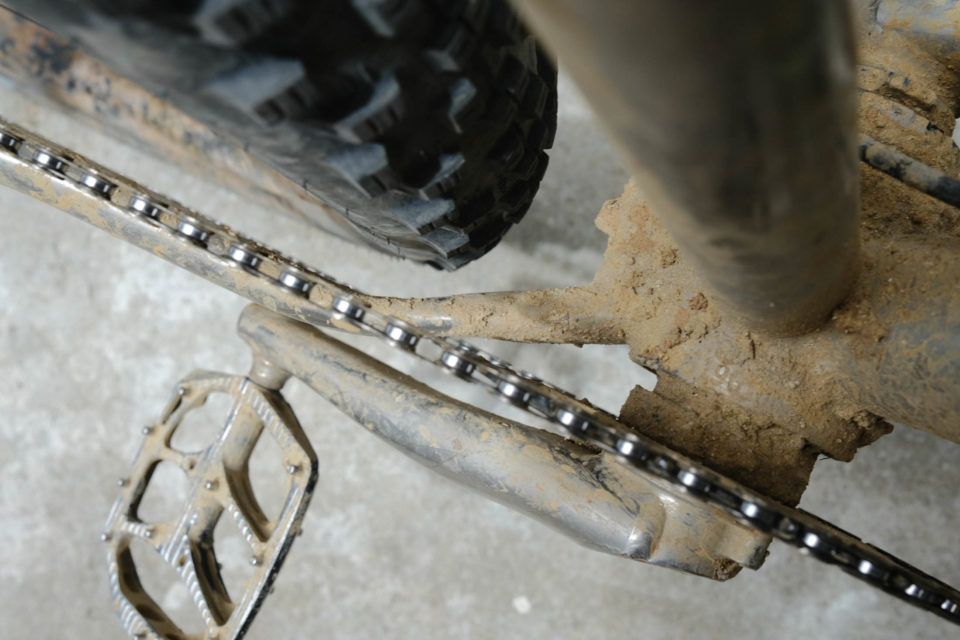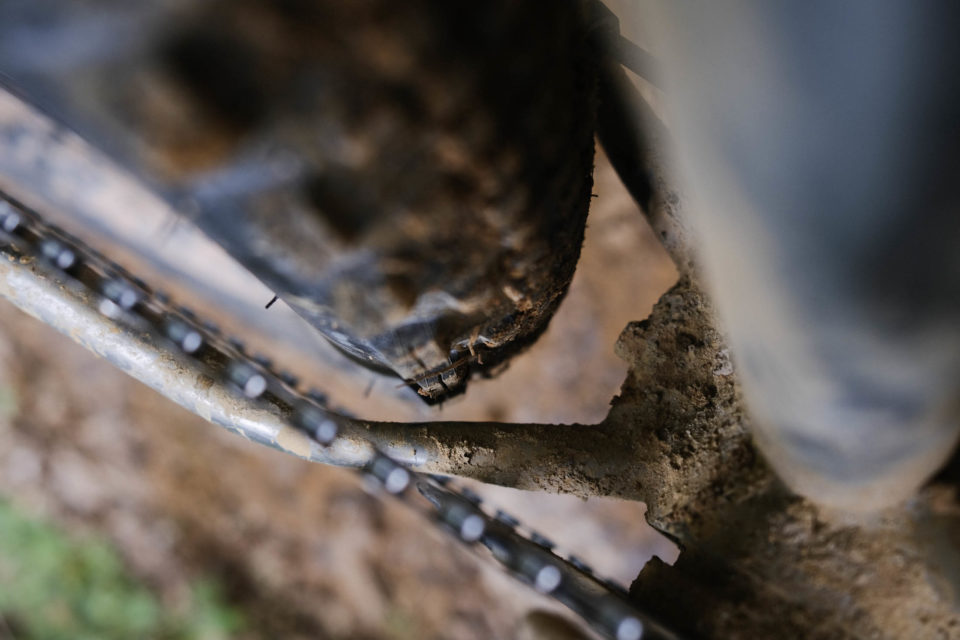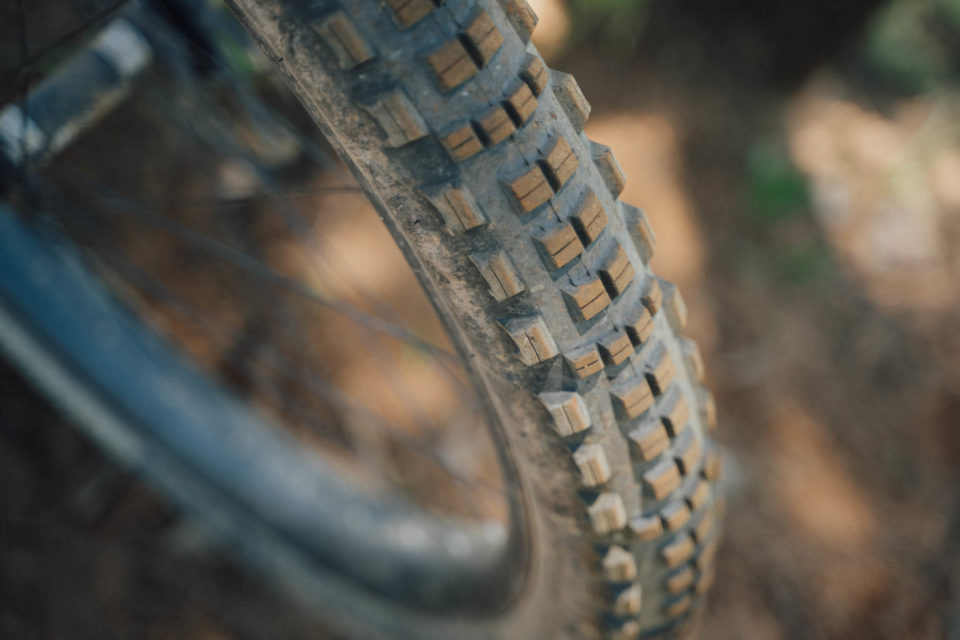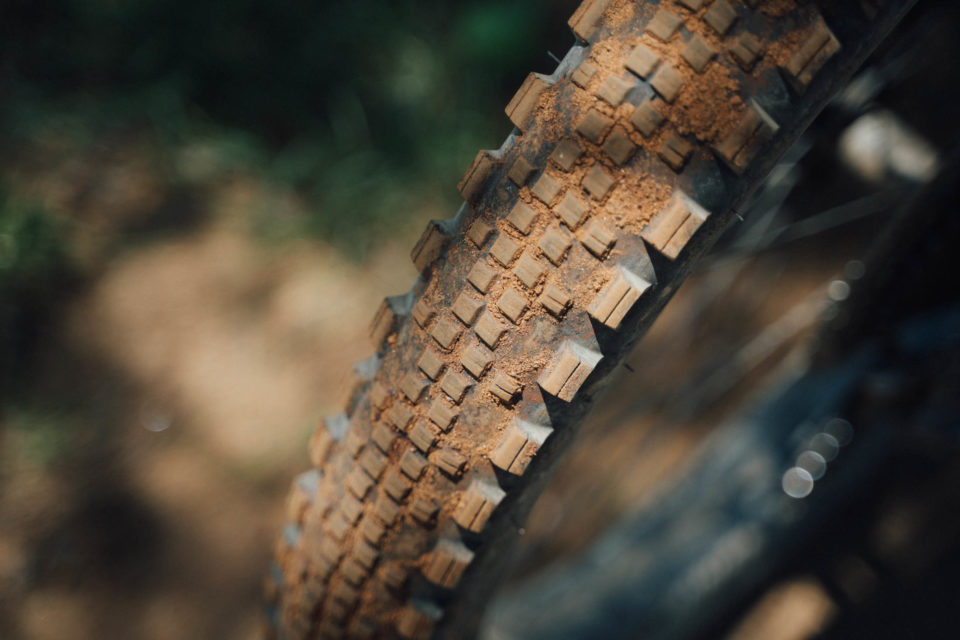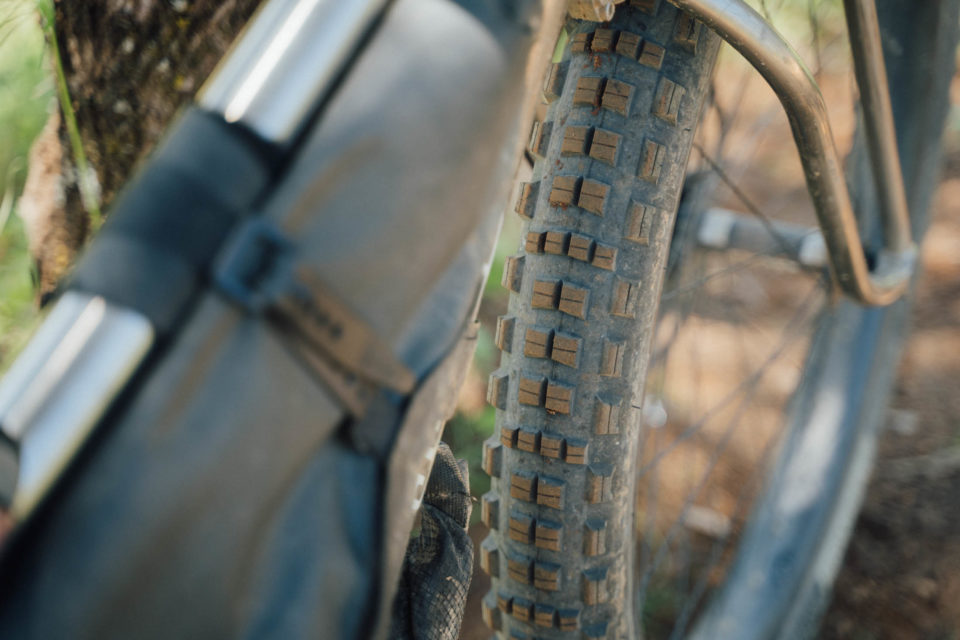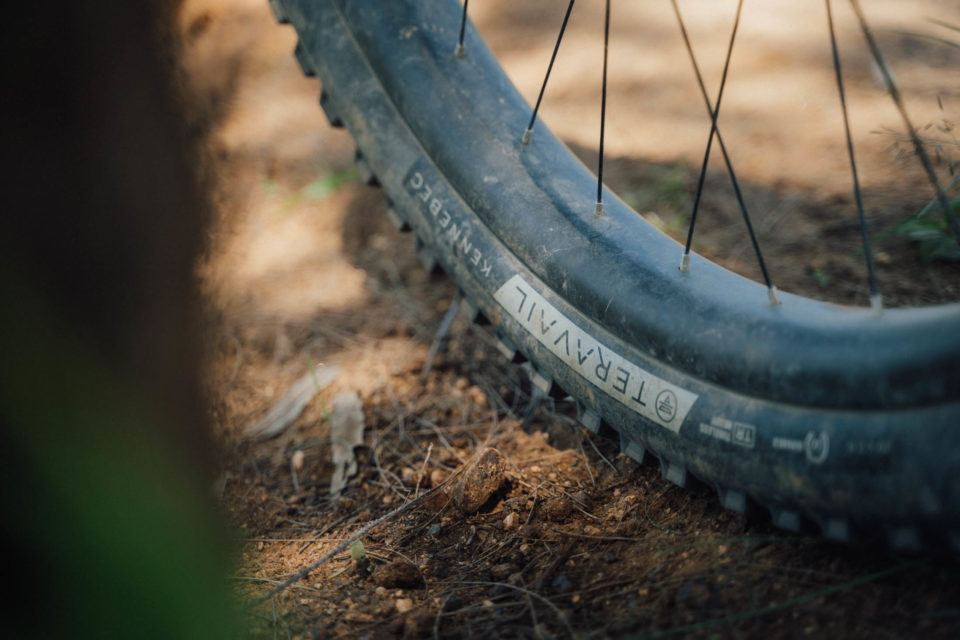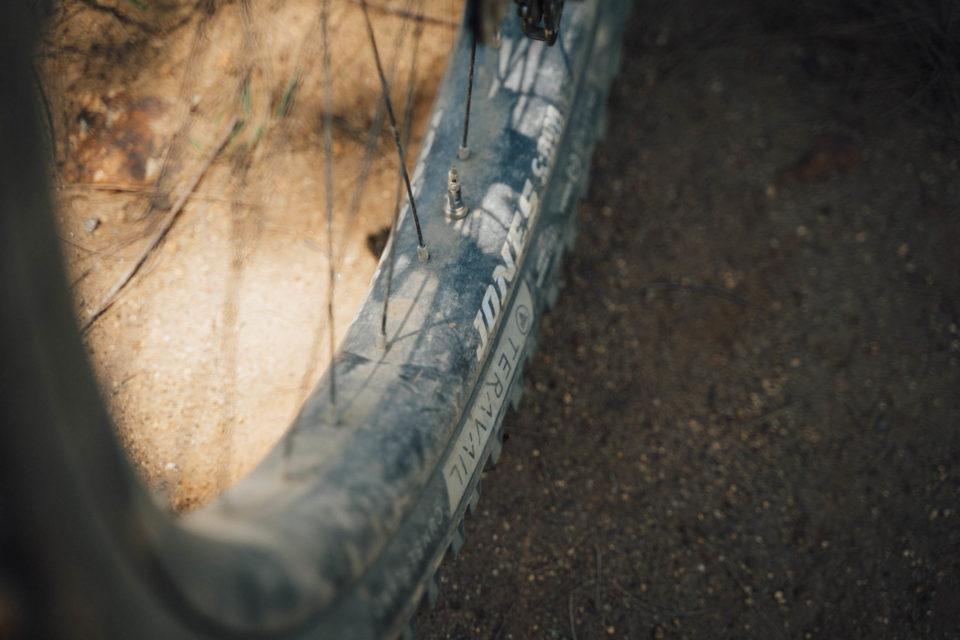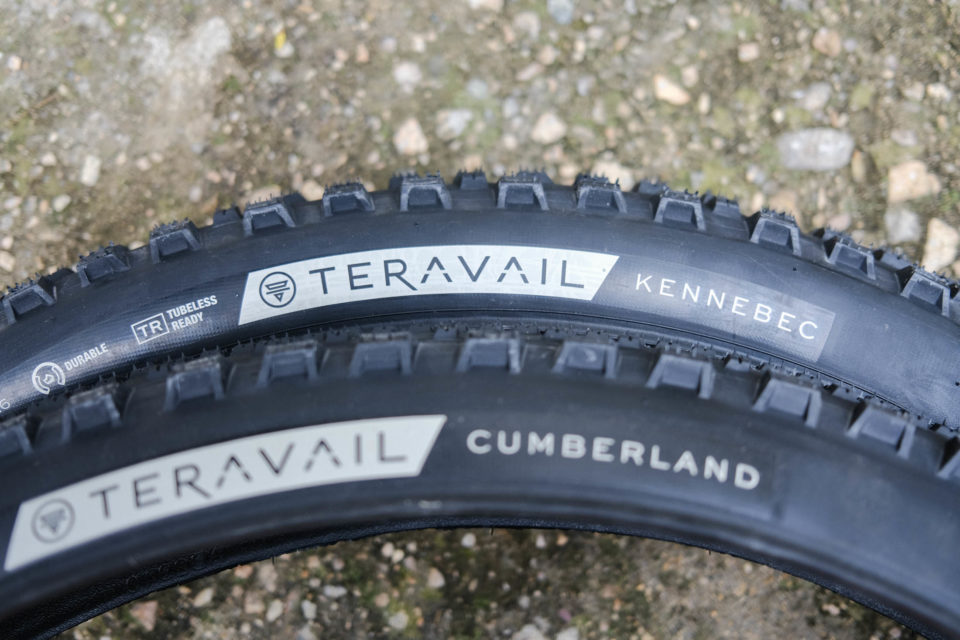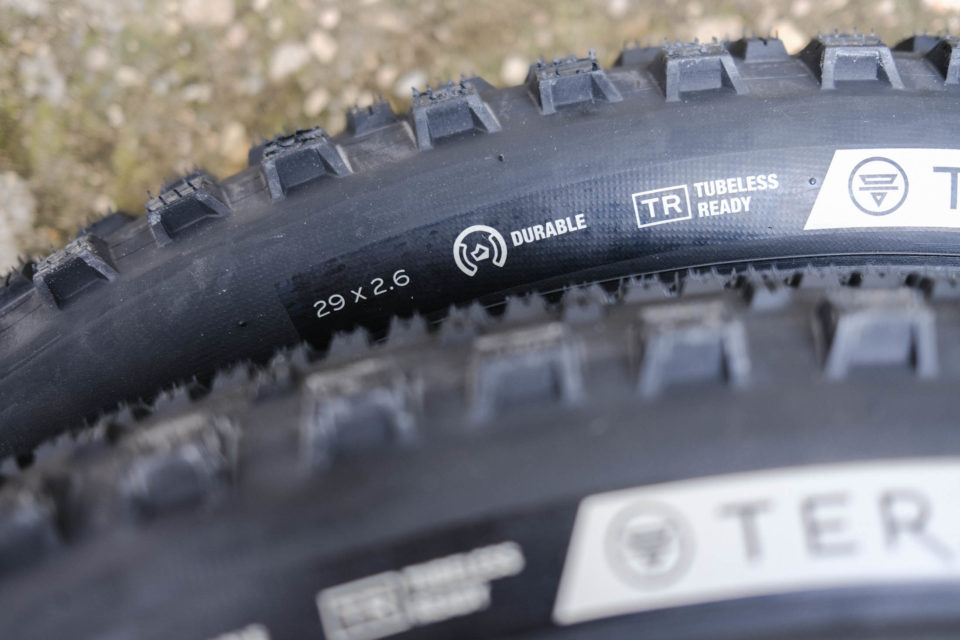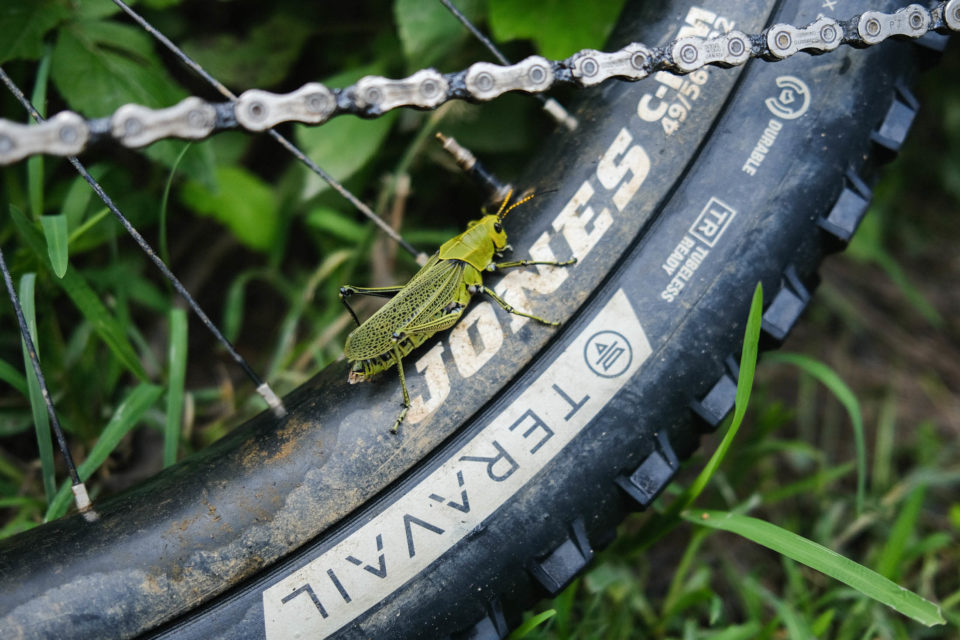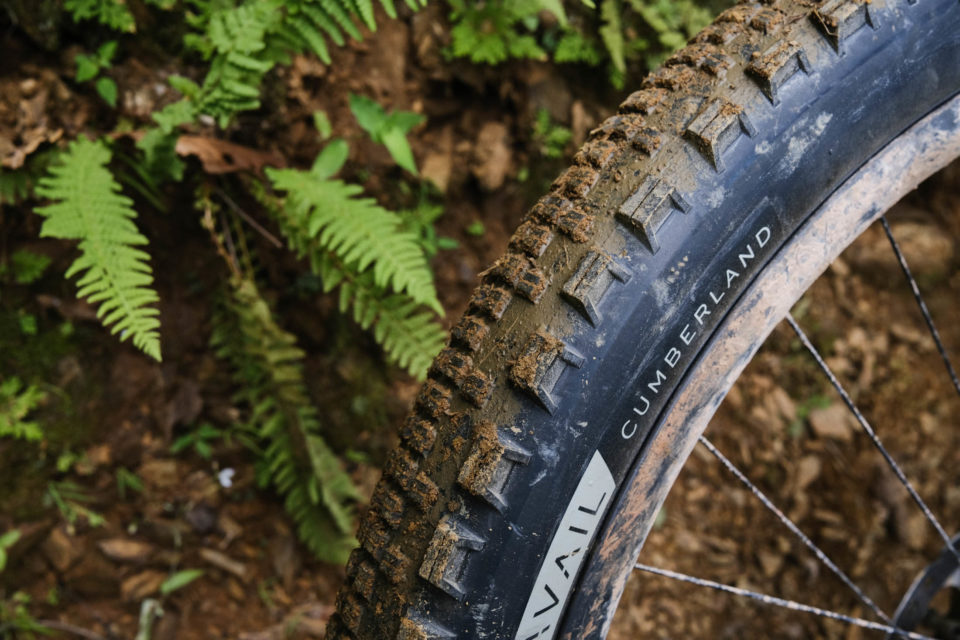Teravail Kennebec/Cumberland 29 x 2.6″ Combo Review
As a longterm advocate of 3″ tyres on rigid bikes, dabbling with the wide trail wheel size has convinced Cass that there’s a lot to be said for ‘skinnier’ wide trail tyres, especially when travelling where replacement options are limited. Find his thoughts on the 29 x 2.6″ Teravail Kennebec and Cumberland tyres here…
PUBLISHED Oct 6, 2020
Back in 2017 (has it really been that long?), Logan took a set of newly launched Cumberlands for a whirl and came back pretty much smitten by the concept of the ‘wide trail’ platform.
Like Logan, I’ve been a longtime advocate of the plus tyres for backcountry bikepacking, since the days of the first generation Surly Krampus and ECR. But as someone who rarely rides with front or even full suspension, I haven’t been as quick to get my head wrapped around the idea of ‘skinnier’ 2.5/2.6″ tyres on rigid bikes, mainly because I value the extra cushion. Granted, I’ve been making moves from 29 x 3″ to the more recent 27.5+ x 3″ platform. But that’s been driven, as much as anything, by finding them easier to source internationally.

Which is partly what led me to this point in time. A noticeable decrease in the number of 29 x 3″ and 27.5 x 3″ plus-sized tyres that are available for 2021 (thanks, bike industry!) or in stock (thanks, COVID-19!) has encouraged me to explore the ‘wide trail’ alternative in more depth. Now, that’s not to say that you can’t track 3″ tyres down, just that there’s definitely fewer to choose from, and given that I’m not sure what the future holds for the plus platform in general, I figured I should scratch a long-standing itch and see what Logan was so enthused about.
First, I gave Schwalbe’s 29 x 2.6″ Nobby Nics a go – and I have to say I was immediately a little smitten. In the past, I’ve run Nobby Nics in a 27.5 x 3″ size (note, no longer available) and although I never had the chance to try them back to back, I intuited an added peppiness to the ride with this version. Razor-sharp handling isn’t necessarily a description I’d use for plus bikes. But shod with 2.6″ tyres, my Jones SWB felt markedly quicker to steer, even if it was at the expense of some out and out comfort – at least at low air pressures – which I was expecting. Being larger in diameter, the 29 x 2.6″ Nobby Nics also served to jack the bike up, handy when riding rocky or rooty terrain with platform pedals.
Interest piqued, I moved over to a 29 x 2.6″ Cumberland at the back, mated to an aggressive Kennebec up front, as seen here. On paper, it seemed like a great mix and match that promised a little more volume than the Nobby Nics, and hopefully lots of sidewall durability too. Why two different tyres? Well, I’m in the position where one bike – currently the Jones Ti SWB – does everything. This means loose, rutted, and rocky trail rides during the week and rugged dirt road bikepacking outings at the weekend. In a nutshell, I love touring, but I also don’t want to compromise on singletrack fun.
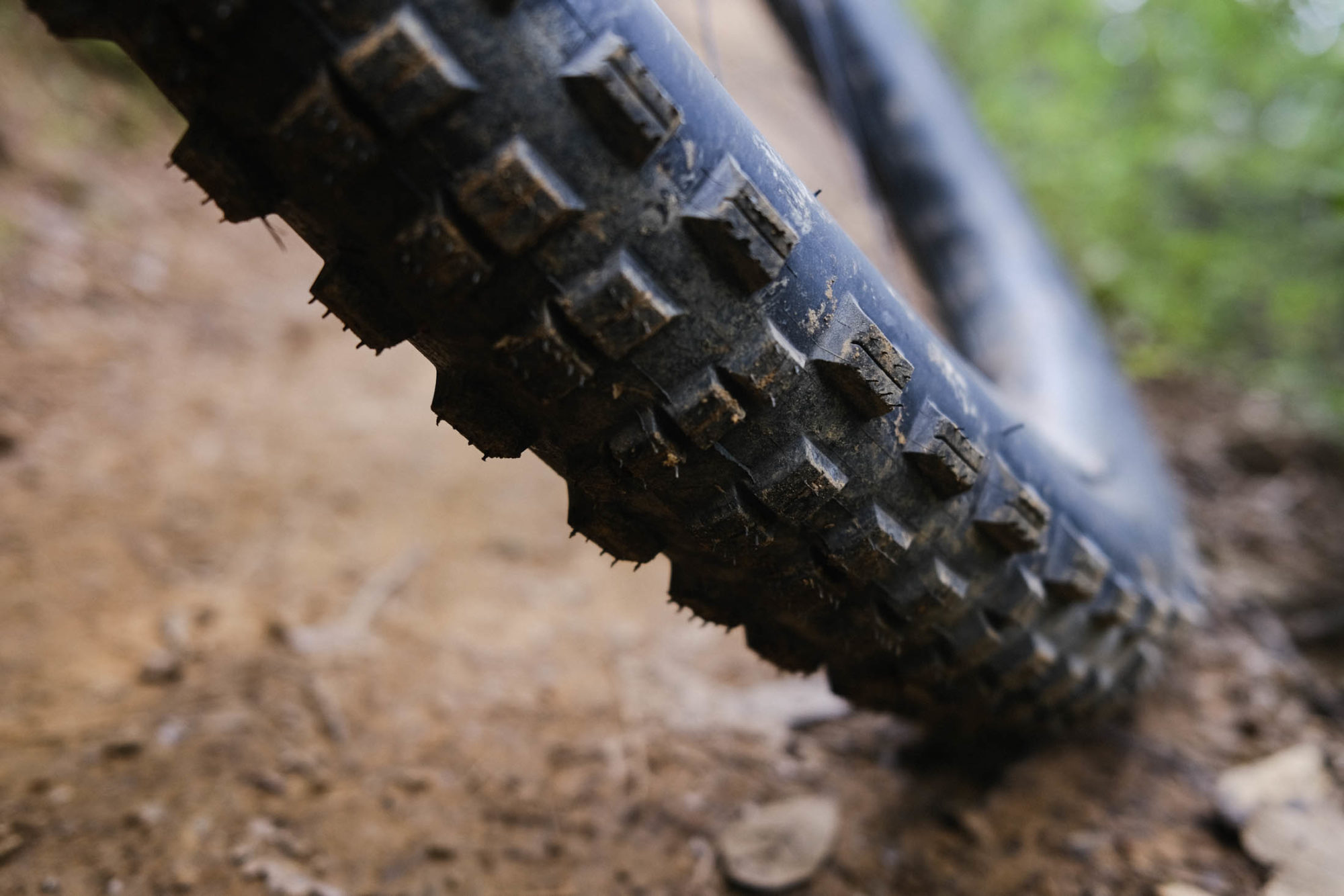
And so far, the experiment has proved more than worth it. Sure, the undeniably knobbly Kennebec is designed as an aggressive trail tyre, so I wasn’t expecting it to roll as efficiently as the Cumberland, which sports much lower profile lugs in the middle, albeit with Kennebec-like staggered and buttressed side lugs on the outer edge. But I’m so taken by the former’s grip and the confidence it gives me to really push hard into loose and rocky corners that I’m prepared to forgive the extra work I need to put in on more sedate terrain. Besides, much of the riding here in Oaxaca is very rutted and I’ve noticed a significant improvement in the way these tyre bites into off-camber terrain. Their side knobs do a fantastic job at finding purchase.
Given the shallower tread, I did notice that I’m now more likely to spin out on dry, loose climbs with the Cumberland at the back, compared at least to lower pressure, wider plus tyres I’ve previously used. But it’s not been enough to cause undue concern, and given my varied needs, it seems a reasonable compromise to make. If it was trail riding only, I’d actually be very tempted by a Kennebec both front and rear.
Mud? It’s a similar story. The rainy season is coming to an end in Mexico and the Kennebec has done a good job at finding grip along gloopy dirt roads. Whilst the Cumberland is a little more prone to sliding out, its side lugs have certainly been appreciated too. I’ve never been especially happy with the tendency of plus tyres to plane over muddy surfaces – perhaps a reason why they’re less popular in countries like the UK – so the 2.6″ width has a natural advantage.
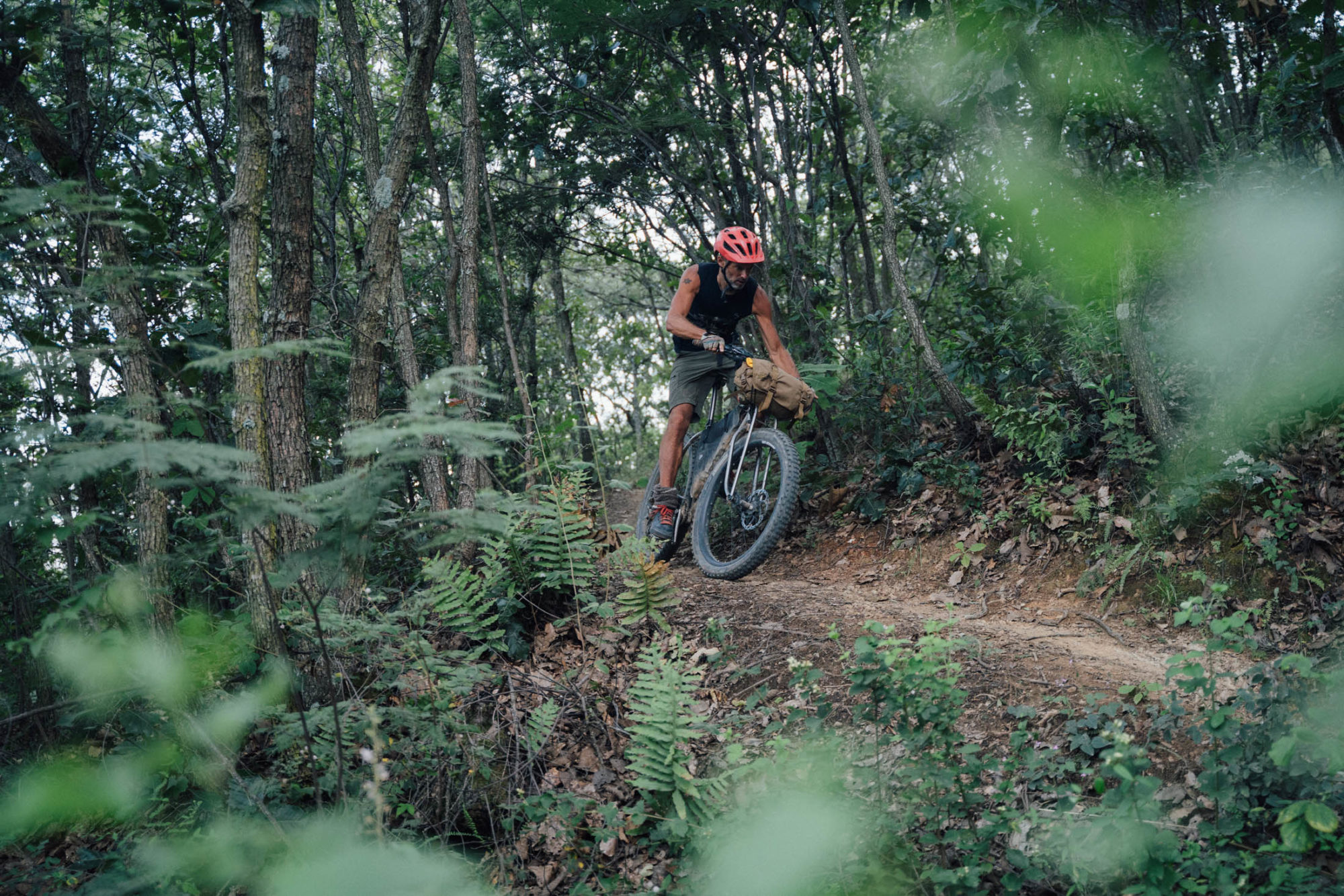
As we all know (to our frustration), not all tyre measurements are created equal. I don’t have callipers to hand, but as you can see from the photo below, the Cumberland 29 x 2.6″ sits quite a bit wider than Nobby Nics of the same claimed size. Still, there’s adequate room in a frame designed to generously clear 27.5 x 3″ tyres, even if mud clearance is reduced. For the record, the casing on the Cumberlands that Logan tested measured 2.62″ (66.5mm) or 2.79″ (70.9mm) with lugs, when shod to 30mm rims, which suggests they run relatively big. In fact, when eyeballing them against a 27.5 x 3″ Surly Dirt Wizard (mounted on a 40mm rim) there wasn’t much between them.
As for setting the Teravails up tubeless, I have no issues to report. Nor have they wept sealant, either, after a couple of months of use. I should note that Teravail recommend an ideal rim width of 29mm but I’ve been running them with Jones’ stocky C-Rims, which measure a whole 49mm internally. Still, the profile looks fine and the sidewall isn’t overly exposed, though I expect a slightly narrower rim may well be a better option, especially if you’re considering running sub-2.6″ tyres too. Still, my C-Rims did lend the tyre some extra stability, which gave me more confidence to try lower air pressures, along with their undeniable strength. See the images below for how they look; the Nobby Nic is on the left and the Cumberland on the right. Although I’d consider mud clearance to be adequate, it’s not what I’d call bountiful.
Downsides? Well, the Cumberland and Kennebec are both substantial on the scales. Much more than I was envisaging, given their reduced width. The Cumberland claims 1135g to the Kinebec’s 1125g – that’s manufacturer’s figures, though I’ve heard they ring true and they did for Logan. Granted, I opted for the ‘durable’ casing, as I knew that I’d be either bikepacking or tackling rocky terrain and I didn’t want to risk sidewalls cuts. In the past, I’ve not had much luck with light casings. Speaking of which, the Light/Supple case versions weigh around 120g less per tyre, which I’d expect to make a noticeable difference when accelerating and climbing.
Comparing them to other tyres I’ve recently run, both the Cumberland and Kennebec are considerably heavier than the 29 x 2.6″ Nobby Nic, which is 910g. But they’re wider too. Still, they’re straying into the realm of 29 x 3″ WTB Ranger Toughs, another similarly priced tyre I’ve favoured in the past for bikepacking duties, which weigh in at a comparable 1140g. They’re also close to a 100g heavier than the more costly 120 TPI Maxxis Chronicle 29 x 3″ – and you can factor in a nominal bump in weight for the larger rim and extra spoke length compared to 27.5in wheels.
All this said, build quality feels reassuringly good. After a couple of bikepacking trips and multiple day rides, I feel confident that the sidewalls will hold and the tread will last, which is what I want in a bikepacking tyre. I’ll update this post in a few months if needed.
How about rolling resistance? Whilst you can’t have everything, the Kennebec feels surprisingly tolerable, and that’s coming from someone who has spent the year running the aforementioned fast-rolling Maxxis Chronicles, albeit in a 27.5″ size – which, as it happens, are no longer available. See? I wasn’t being paranoid. On a more general note, I appreciate that 29 x 2.6″ tyres feel less sensitive to air pressure tweaks when jumping between dirt and pavement, an issue that often befalls plus tyres, in order to avoid self-steer.
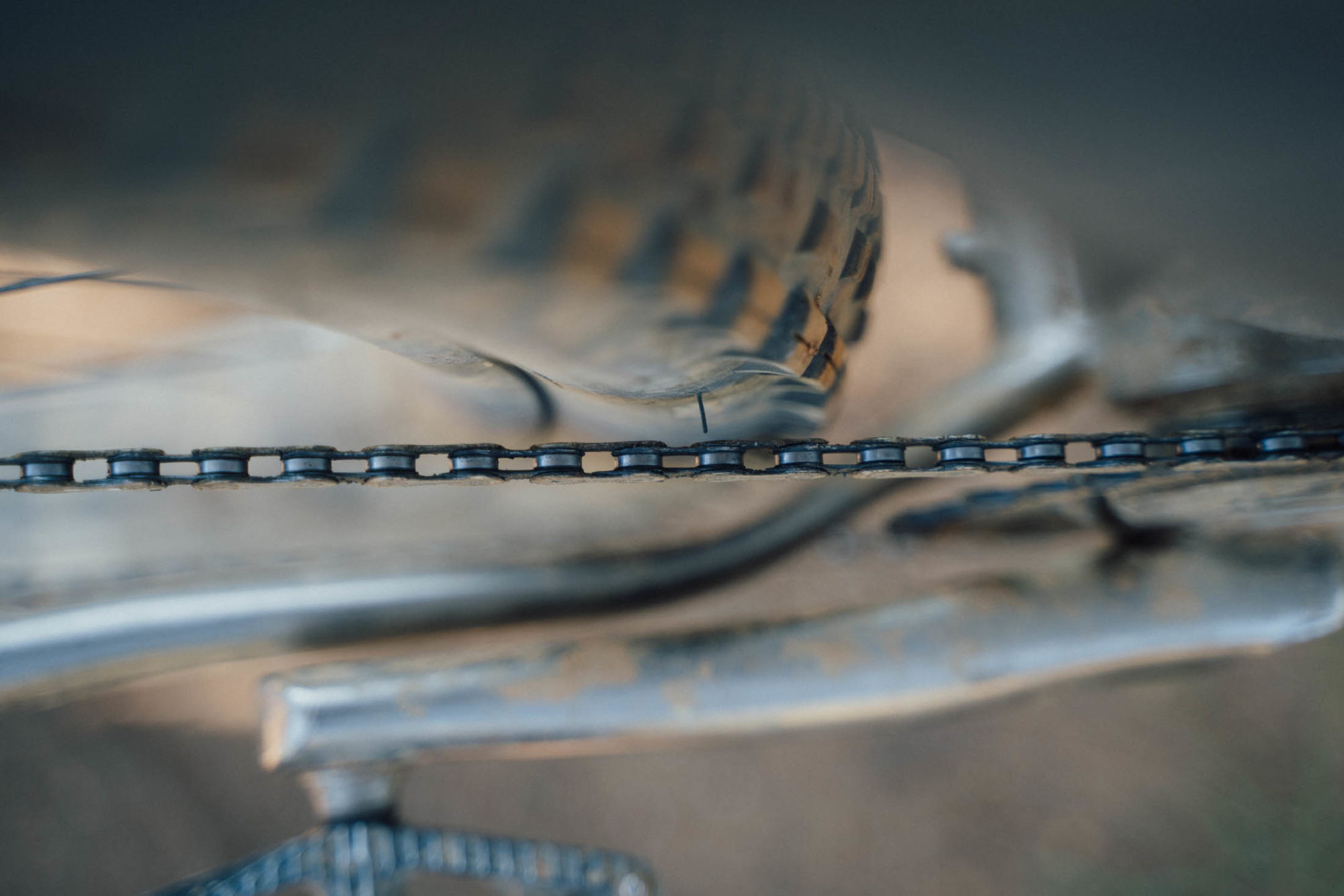
In an additional perk to moving over to this wheel size and width, chain to tyre clearance is increased, which has been a longtime gripe of mine when running 1x drivetrains and 3″ tyres, especially when I’m home in the UK. The picture above shows ample clearance in the largest cog of an 11-50T, 11-speed cassette. Sure, it’s much less of an issue if you’re running Surly’s OD double crankset or a Rohloff Speedhub, of course, but given the popularity of 1x drivetrains, I’m surprised that it doesn’t bug other people too. As mentioned, being a taller tyre over its 27.5 x 3″ ‘equivalent’ also means there’s greater rollover prowess – the reason I was so taken by 29 x 3″ tyres in the first place. But this comes at the expense of seatbag clearance, so shorter riders beware.
Lastly, there’s the question of availability, which brings me back to why I ventured into this platform in the first place. I always keep my eyes peeled for what tyres are easy to get hold of outside of the US and it certainly seems that whilst 2.6″ aren’t always carried in stock, 2.4-2.5″ alternatives can be sourced in most high-end bike shops. This helps reinforce my theory that 29 x 2.6″ are a sensible size to travel with, as it’s more readily interchangeable with what can be found locally, should disaster strike.
- Model Tested Kennebec and Cumberland 29 x 2.6″ Durable Casing
- Weight (per tyre) 1125/1135g
- Price $75
- Learn More Teravail.com
Wrap Up
I’d consider the Kennebec and Cumberland mashup a winning combination for both rocky trail riding and off-road travel. Sure, double Cumberlands would doubtlessly be more suited to many bikepacking applications, but given that my trail bike is also my touring bike – and I that ride on dirt the vast majority of the time – I’m happy to have opted for a more chunky front end.
As for riding comfort, the trade-off compared to 3″ plus tyres, whilst noticeable, isn’t as much as I was expecting. And that’s from the perspective of someone who exclusively rides a rigid bike. It’s also reassuring to be running a tyre size that’s relatively interchangeable with what’s available the world over, because if you can’t find 2.6″ tires overseas, there are enough 2.4/2.5″ options that won’t radically change your bike’s geometry.
On the downside, I have to admit the weight of both these tyres – in a durable casing – did raise my eyebrows. Thankfully, I’m also someone who values both longevity and peace of mind, so I was able to lower them once more. Still, given the Kennebec/Cumberland’s burly construction, it does make me wonder if I could have got away with the light/supple version… and had tan sidewalls too! If you have any long term experience with light/supple versions of the Kennebecs, do let us know below, as I remain curious.
With thanks to Emma Bucke for the Oaxacan action photos.
Please keep the conversation civil, constructive, and inclusive, or your comment will be removed.







